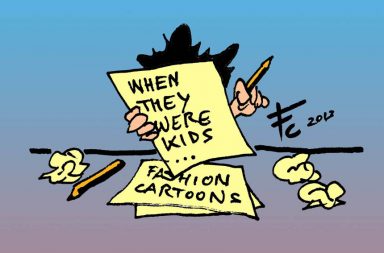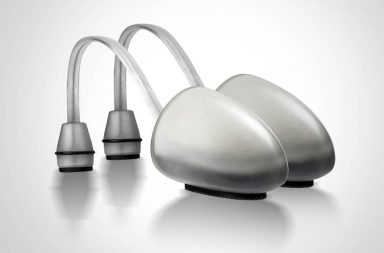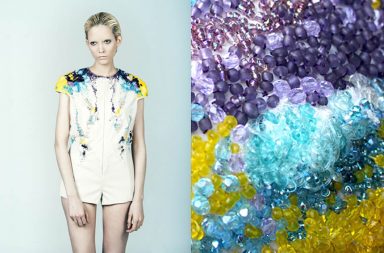For a while now we’ve been hearing talk about 3D printing and how it’s going to revolutionize the manufacturing process for different items, such as shoes.
Many designers have begun to look to this new way of working which without a doubt offers a multitude of new possibilities that have only been limited by one thing, the different source materials available.
Aware of the problems involved in making a shoe that you can actually wear, Liz Ciokajlo is working on how to create a shoe printed in 3D from biological materials.

Her project is:
The Objectification of the shoe (http://showtime.arts.ac.uk/LizCiokajlo).
The collection:
Natural Selection
The product:
Incredible wedges, light (the platform and the heel are hollow) and made from felt, hemp, flax and coconut.

Liz Ciokajlo

Born in the US and based in London, Liz caught our eye not only because of her designs, but because of her reinvention of the manufacturing process for shoes.
Before starting this venture, she worked as a consultant and a leather handbag designer. Her career now is the result of years of experience in the world of product and structural design, which she applies prodigiously to creating shoes.
She now dedicates her time to researching 3D shoe design, convinced that the materials that have been in use up until now haven’t been the right ones (plastic, nylon, etc.)
In her last project, she decided to work with a series of materials not commonly associated with footwear such as wool felt, flax or hemp and she started to experiment, choosing to use the wedge as a unifying element.
SO CATCHY!: Liz, in your blog you say “I find shoes one of the most seductive and human tools of expression and reflection on earth”. What does that mean?
LIZ CIOKAJLO: Because the structures are really demanding due to the forces and stresses that are on a pair of shoes. In addition to that, because they’re fashion items, they reflect a lot what’s happening in culture and they’re very intimate with the body because our feet are incredibly sensitive.
From my experience, and I’ve designed a lot of 3-dimensional objects, I find footwear one of the hardest things to design; the most challenging. It is a real fusion of the kind of form and function, when you can get the structure to become everything but be beautiful and be interesting and be expressive. I think that’s a real challenge.

SC!: Tell us how you decided to do “The Objectification of the Shoe”.
LC: Yes I did that while I was on the MA. I wanted to explore 3D print with footwear because I like it as a process, I think it has a lot of benefits because you reduce material, you don’t have wastage and it brings back manufacturing to the local [level]. 3D print brings back local manufacturing because it relies on machine as opposed to labour cost. For example, the most expensive thing on a Barbie doll is the clothes. The more stitching, the more labour. Also, in 3d print, files produced in one location can be electronically sent to another part of the world, [closer] to retail distribution and printed there, thus reducing transport costs.
When I started, I just looked at a lot of 3D printing, very plastic-y, very nylon-y and even though the forms were really beautiful, and elegant because they just had one material, I just didn’t want to wear them because, I just thought I would have sweaty feet if I wore them, you know?
So I started to look at materials that had customization in them and that’s when I stumbled upon the wool felt and non-wovens and that’s when I discovered that if the keratins were soaked with a resin, they became super strong because the keratins in the wool are hollow tubes and it makes them, because they’re proteins, and they’re natural materials, really elastic so it wouldn’t crack.
I started to think that maybe there was some kind of path that we could go down where we look at non-wovens, flax and hemp and I explored all those kinds of areas and coconut and latex. I worked with companies in Germany and they provided the materials. Later, I went down to visit Clark’s just because I wanted to know if what I was doing was barking up the wrong tree, was really out there and silly and I should just be doing, you know, really well proportioned leather shoes. I wanted to know if I could find some kind of work afterwards and they just loved it.

SC!: What are you working on now?
LC: Well, right now I’ve got a small job that’s really interesting, it’s a start-up and it’s to do with materials but in a kind of safety high performance way. I did a collaboration with Suzanne Lee to grow a shoe with her material, her bacteria cellulose. I’ve got a couple of projects in the pipeline to start in September that are Arts Fund Council that might come off.
SC!: Let’s talk about the process of 3D printing. How can 3D printing alter the architecture of shoe design?
LC: Well any process will change what the thing looks like. I did a lot of research at the Northampton Shoe Museum on primitive shoes because I really wanted to understand [how] it was that we connect on a primal level with footwear. You go there and things might be all moccasins or shoes that only last three weeks and then you just throw away and they go back into the earth. It’s very interesting that what we know of shoes today is really based on the industrial revolution with all the mechanisms that went into it. Those things are very set by the machines that made them.
I always give the example of the toothbrush. I used to design toothbrushes on one of my early jobs after university and it’s really interesting. There were wood and bone toothbrushes and they were just slabs, they were flat boards. And then we started making them in plastic and we mimicked the flat board for years and years and years and years before we started to think, ‘Ah, we could actually put some form in this that would actually help the way it brushes our teeth’. So, we’re not there yet with 3D print.

SC!: What do you think is the future of footwear design?
LC: I think in the future we will look at additive manufacturing for footwear and bio-printing. It won’t be in your home but it will be in factories still I think.
SC!: Liz, who is your favourite footwear designer?
LC: Oh, that’s really easy, Marloes Ten Bhömer. I think she’s just fantastic.
SC!: Where do you see yourself next?
LC: That’s a good question. I’m trying to get into finding out as much as possible about biology and how that informs materials in structures and construction. There’s a project that might come off, to work with reconstructive surgeons and with an artist named Rhian Solomon (http://www.rhiansolomon.co.uk/). For me as a designer I think it’s really informative, because you get to meet with doctors and you get to understand how they look at the foot as a structure and then that forms what structures you create. I think those things seem to be off the beaten track but I think they’re very relevant. Right now, I intuitively feel that I need that to go forward.
SC!: Where do you see yourself in the future?
LC: I don’t have a desire to have my own fashion house, or my own range as a designer that’s known for doing collections. I want to work with other creatives that are developing materials that I can apply to structures. I want to become known as that person that deals with materials and structures in footwear in an interesting way because I find it very interesting. I enjoy it because that’s what I like to do. I’d like to remain independent because that enables you work with both companies on projects.
Also, what I want to do needs to be tested. Let’s face it, I couldn’t sell hollow heels without testing it. If someone tried to walk on uneven pavement and they fell, they would sue me (laughs). So it’s very important… I think if you work with companies who have the [capacity] to do that, to test it and then manufacture it. That’s the way that I’d like to work, with a company doing a collection for them. I find that I really enjoyed working with other creatives, so, to me, I’m not too fussed about having my name attached to [something]. I’d like to see the work out there.
Translation and layout by Michael Padilla




